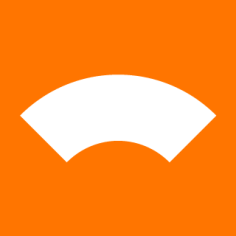With the rapid evolution of IoT technology, there is an acute necessity in reliable and effective methods of back-end development for collecting and processing data from the Internet of Things via authorized protocols and HTTP Rest requests. As a solution for this issue, the leading cloud providers have offered their products to the market. Let’s look at the three most important cloud systems for back-end needs of IoT.
Amazon IoT
Using Amazon IoT is, first of all, justified because of its pricing, as AWS IoT counts only the number of messages from devices and does not take extra fees for deliveries to Amazon S3, Amazon DynamoDB, AWS Lambda, Amazon Kinesis, Amazon SNS, and Amazon SQS. Besides, in the trial mode you get 250,000 free messages, which are more than enough for the basic level of IoT system, including supporting MQTT protocol.
Amazon also gives you a big variety of geographic locations for services all around the world; and provides different tools for working with IoT, including AWS IoT API, AWS SDK, AWS IoT Thing SDK for C, and Command Line Interface (CLI), which is very important for admins of big systems and DevOps. Such popular services as Amazon S3 and Amazon DynamoDB allow to quickly integrate the existing projects within Amazon cloud system.
Microsoft IoT
The main advantage of using Microsoft IoT is its simple integration with .NET platform. This gives an opportunity to millions of C#, Managed C++ and other developers to use .NET platform on the fly to work with a large spectrum of Internet devices spending minimum time on learning new API.
On the other hand, the broadcast of this system is ensured by its simple integration with Microsoft Windows IoT, for instance, in such well-known controllers as Raspberry Pi 2, Raspberry Pi 3, Arrow Dragonboard 410c, Minnowboard Max, Arduino Wiring API.
Using Visual Studio, as a primary environment for development, makes it easier to start a project, coding, and deployment into a cloud system. Microsoft Azure Devices as a cloud system working with IoT devices provides a wide range of out-of-the-box solutions for back-end development of IoT systems.
Google IoT
Google Internet of Things (IoT) Solutions, in addition to the basic set of data processing and storing, enables you to work with big data in real time. Google provides programming of the cloud system for IoT with the help of open-source Java-based Cloud Dataflow SDK. Also, there is an interesting model of data processing with Cloud Dataflow. To calculate the fee for a selected IoT solution, Google offers a handy calculator.
Conclusion
The contemporary cloud systems offer rather convenient and comprehensive set of tools for the IoT development. The main providers of the cloud solutions accelerate the IoT and create a great alternative for building IoT systems capable of processing data from a large number of devices.





![[Blog cover] SEO optimization best practices](https://svitla.com/wp-content/uploads/2025/05/Blog-cover-SEO-optimization-best-practices-560x310.jpg)